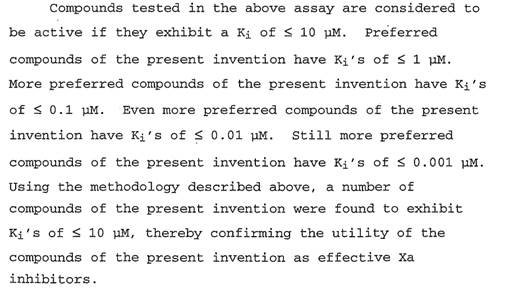On Apr. 07, 2022, UK High Court found apixaban compound patent and therefore its SPC, invalid under lack of plausibility.
The patent-in-issue was EP 1,427,415 assigned to BMS which is expiring on Sep. 17, 2022. Corresponding SPC (SPC/GB11/042) would expire on May 19, 2026. The claims of the patent relate to a compound called apixaban, sold by BMS under the name ELIQUIS and which is a factor Xa inhibitor used for thromboembolic disorders. Claimants, Sandoz and Teva admitted infringement but sought revocation of the patent under lack of plausibility.
Court said that lack of plausibility is not itself a ground of revocation, but arises under article 56 (inventive step) and article 83 (sufficiency) of the EPC. Court then addressed number of cases relating to the legal principles applicable in relation to plausibility such as T 939/92; Warner-Lambert v Generics (2018, UKSC 56); Fibrogen v Akebia (2021, EWCA Civ 1279); T 0016/18 (Sumitomo). Out of these case laws, UK court emphasized on ‘Warner-Lambert v Generics’ decision of UK Supreme Court. Court said that the underlying point is that the disclosure in the patent must demonstrate in the light of the common general knowledge at the priority date that the claimed therapeutic effect is plausible. Court further spelled out the general guidance:
1. a product is efficacious for the treatment of a given condition must be plausible.
2. it is not made plausible by a bare assertion to that effect, and the disclosure of a mere possibility that it will work is no better than a bare assertion.
3. the claimed therapeutic effect may well be rendered plausible by a specification showing that something was worth trying for a reason, ie not just because there was an abstract possibility that it would work but because reasonable scientific grounds were disclosed for expecting that it might well work. The disclosure of those grounds marks the difference between a speculation and a contribution to the art.
4. although the disclosure need not definitively prove the assertion that the product works for the designated purpose, there must be something that would cause the skilled person to think that there was a reasonable prospect that the assertion would prove to be true.
5. a direct effect on a metabolic mechanism specifically involved in the disease, this mechanism being either known from the prior art or demonstrated in the patent “per se.”
6. the effect on the disease process need not necessarily be demonstrated by experimental data. It can be demonstrated by a prior reasoning.
Court in its analysis said that the plausibility should be assessed from WO 2003/026652, the application for the patent, to avoid any issue of added matter. Court after going through the relevant portions from WO’652 said that the only statement of work actually done is that “a number of compounds” were tested and had a Ki of 10 µM or less. (See below, Page 170).

Court said that the statements about lower Ki for preferred/more preferred/still more preferred compounds are aspirational targets only. There is no indication in this text itself of which or how many compounds were tested or with what specific result, and there is no reference to apixaban.
Court evaluated plausibility into 2 steps: Plausibility of factor Xa binding and Plausibility of therapy. BMS argued that only first point is sufficient and `652 makes it plausible that apixaban is an effective factor Xa inhibitor. Claimants disputed and argued that even if the specification of `652 made it plausible that apixaban had been tested and found to have a Ki of the order of 10 µM, that was inadequate for therapeutic use. Court agreed with claimants and said that BMS seeks to read far too much into the above sentence of page 170. There is no way from this sentence alone to draw any sort of inference about any individual compound, be it apixaban or any other. There is simply no information, and given Counsel for BMS’s acceptance that some compounds might also have failed, there is no way for the reader to know of any particular compound whether it was good or bad. Court thus finally concluded that the `652 application does not make it plausible that apixaban would have factor Xa binding of the level of 10 µM as referred to on page 170, or any useful degree of binding. With respect to second point, (plausibility of therapy) court said that even if `652 had made it plausible that apixaban had the degree of binding indicated on page 170 (10 µM), it would not make it plausible that it would be useful in therapy, because nanomolar potencies were needed for that.
Court thus concluded that EP 1,427,415 B1 is invalid by reason of lack of plausibility. Because the patent is invalid, so is SPC/GB11/042.
